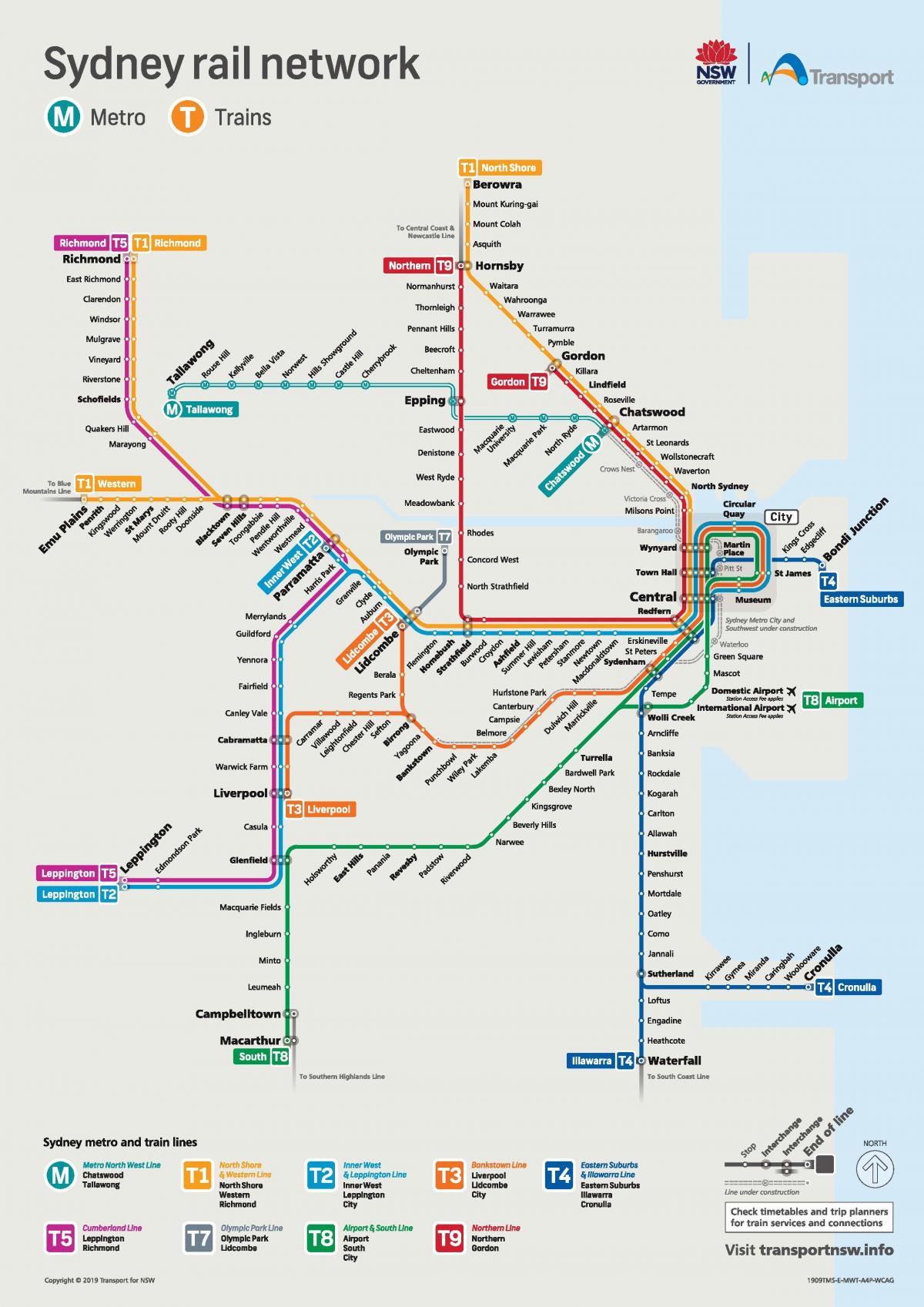search
Sydney trains network map
Map of sydney trains. Sydney trains network map (Australia) to print. Sydney trains network map (Australia) to download. Sydney, the largest city in Australia, has an extensive network of passenger and freight railways. The passenger network is a hybrid metro-suburban railway with a central underground core running at metro style frequencies, which branches out into a suburban commuter type network. The system also carries freight, and there is a separate network of freight lines, some of which are disused as its mentioned in sydney trains network map. All suburban passenger trains in Sydney are double-deck electric multiple units. Upon electrification in the 1920s Sydney operated single-deck multiple units but these were progressively withdrawn from the 1960s until their final demise in 1993. Single-deck cars may be reintroduced if the proposed 'metro' lines are constructed. RailCorp operates passenger trains under the Cityrail brand, and long distance trains run through Sydney under the Countrylink brand.
All Sydney trains use standard gauge, with a distance of 1,435 mm (4 ft 8 1⁄2 in) between the rails (see sydney trains network map). Trains operate for 20 hours a day, and over 1 million weekday passenger journeys are made on 2365 daily services over 2080 km of track and through 306 stations (including interurban lines). Rapid growth in demand for rail transport in the Sydney Basin is leading to passenger crowding and displacement on major parts of the Sydney rail network. Demand for rail trips in Greater Sydney increased significantly from 300 million trips in 2015, to 420 million trips in 2018 — an average of 7.6% growth each year. In June 2020, we listed More Trains More Services Stage 2 as a Priority Project. The proponent is investigating options for the remaining sections of the network.
Interstate train to Sydney terminals are up to 1500 metres long, while short-haul container trains from the terminals to the Port Botany seaport are around 600 metres long as its shown in sydney trains network map. Coal services to Port Kembla are another major traffic. Freight operators include Pacific National, QRNational, Independent Rail, Australian Railroad Group, Southern and Silverton Rail and Patrick Port Logistics. Electric trains that had previously terminated at the Central Station continued north, diving underground at the Goulburn Street tunnel portal, stopping at Museum underground station and then terminating at St James. Other lines were quickly electrified soon after. Also, in conjunction with the construction of the Sydney Harbour Bridge which opened in 1932, an additional underground line in downtown Sydney was constructed, connecting the North Shore line with Central Station via two downtown stations – Town Hall and Wynyard. It was only in 1956 that the two CBD lines were linked via the Circular Quay viaduct, which allowed services to make a continuous run through the city and return to the suburbs without having to terminate.


